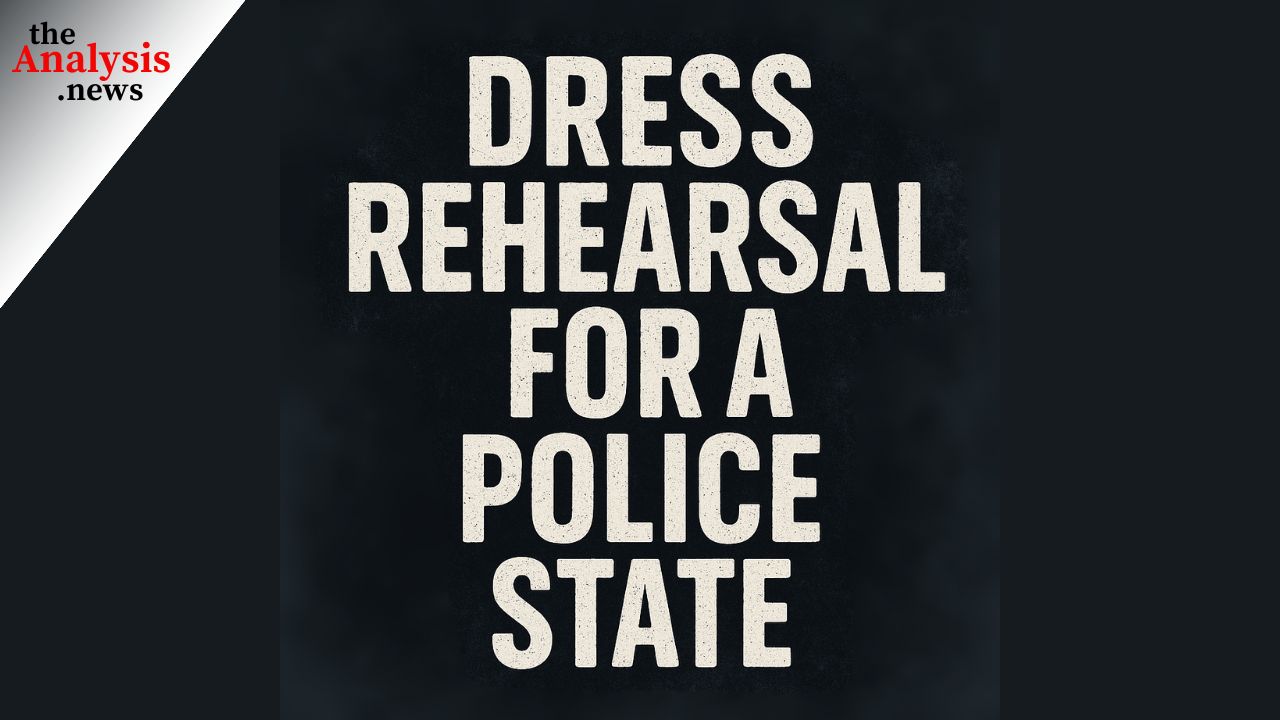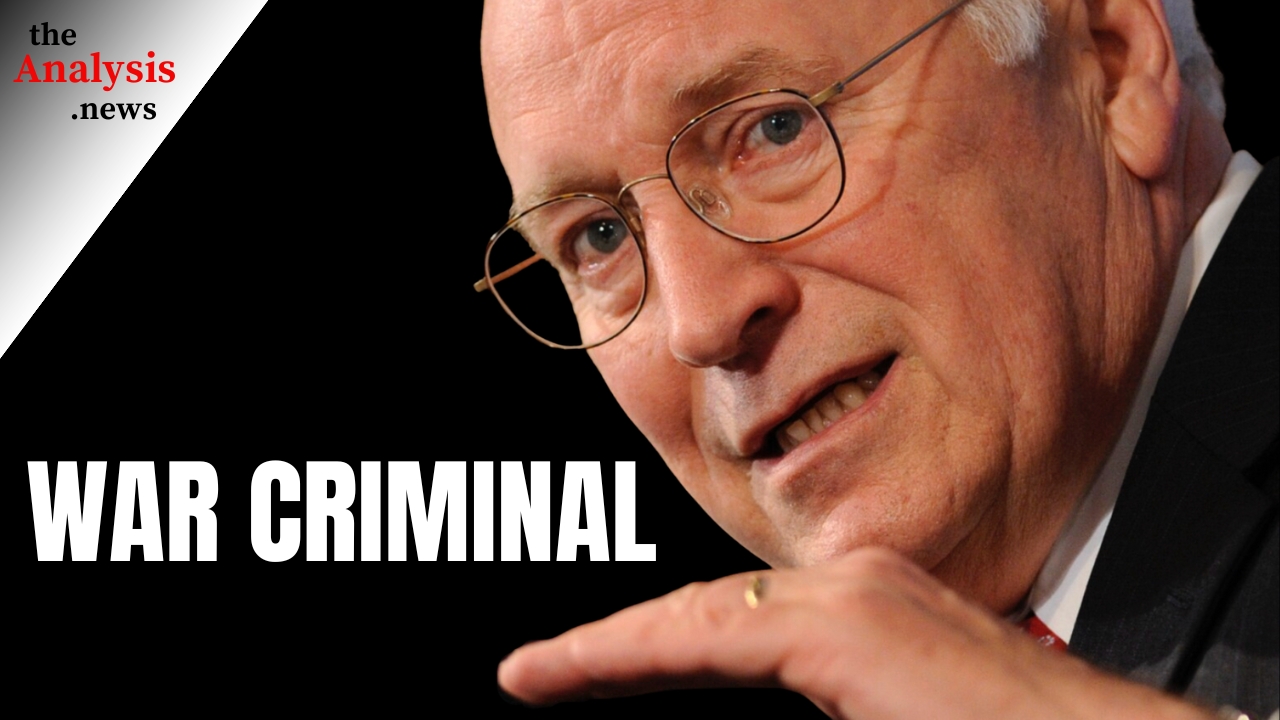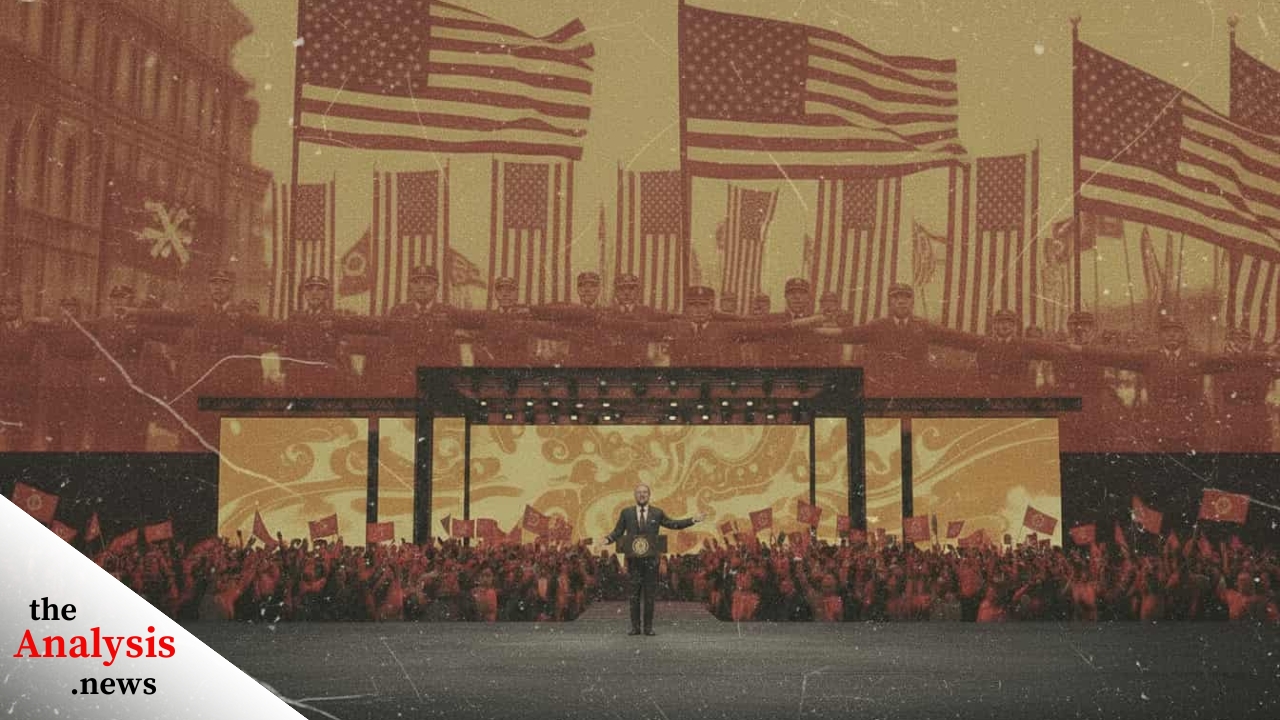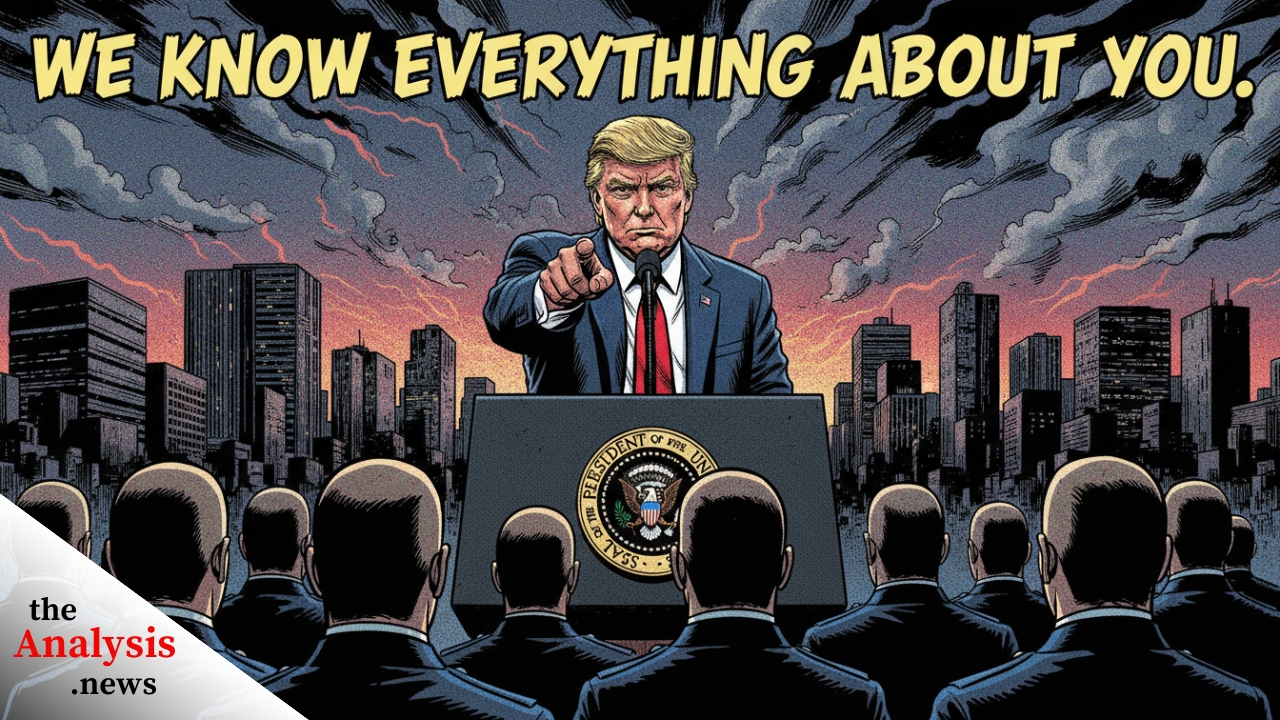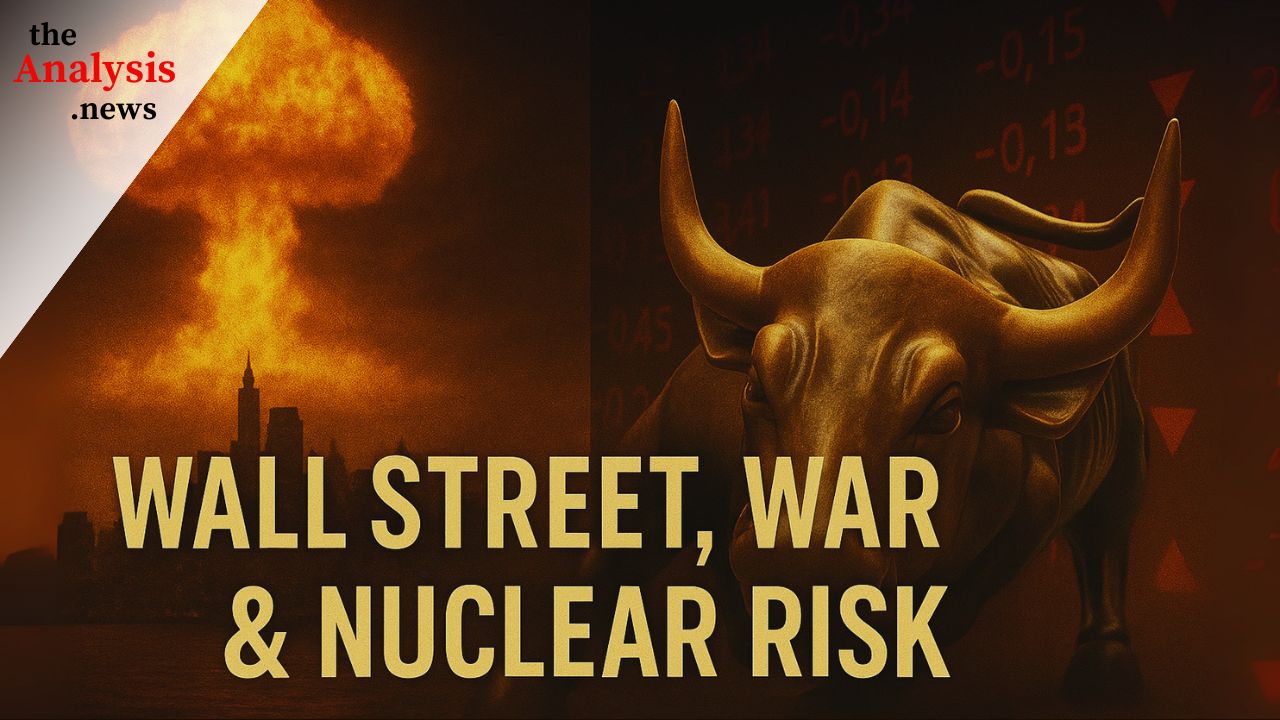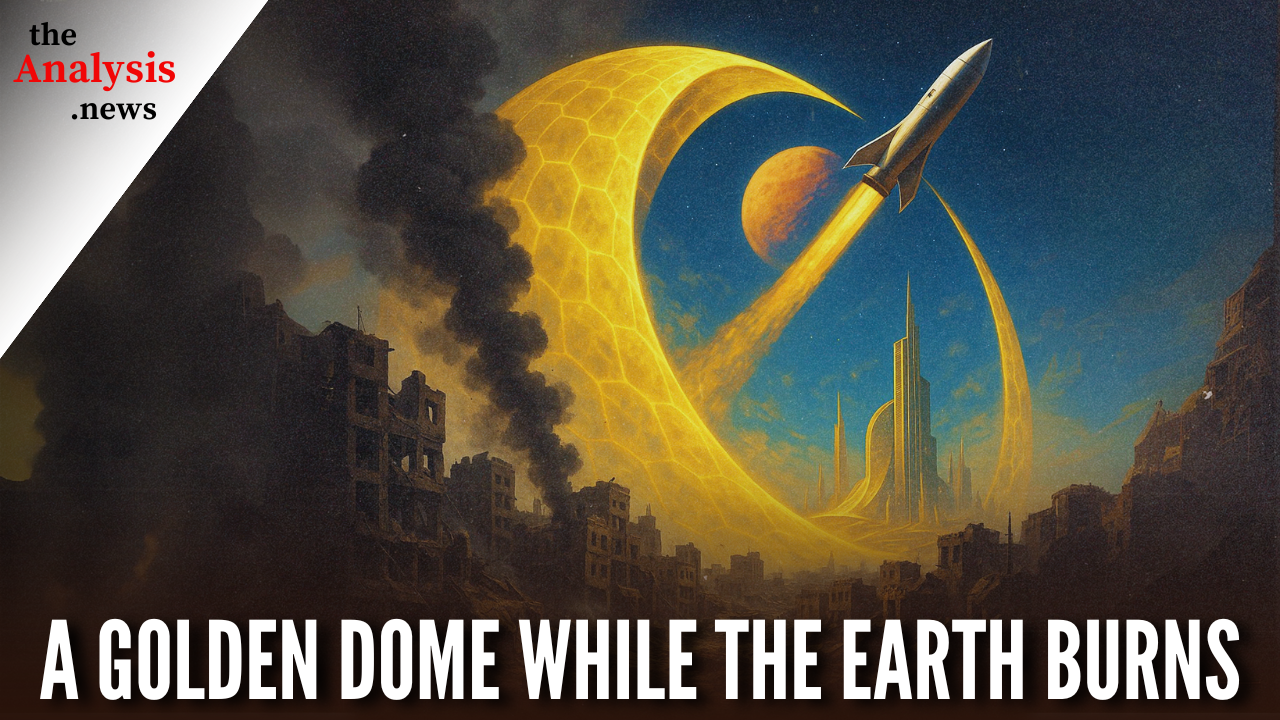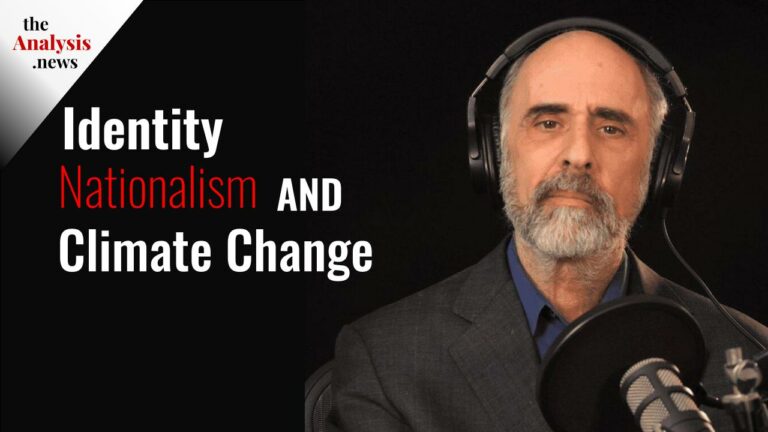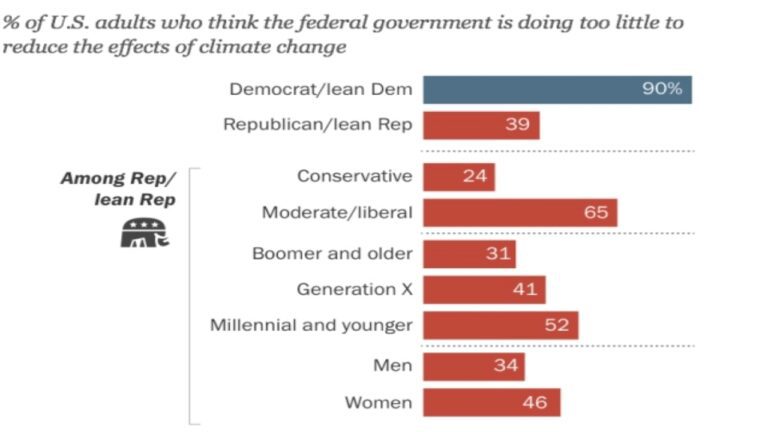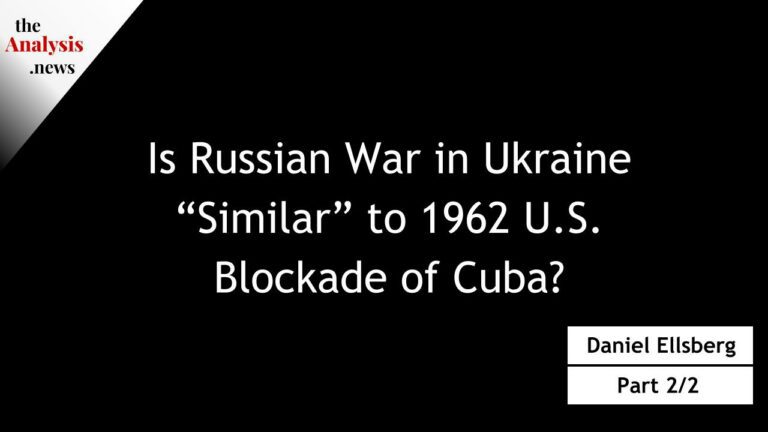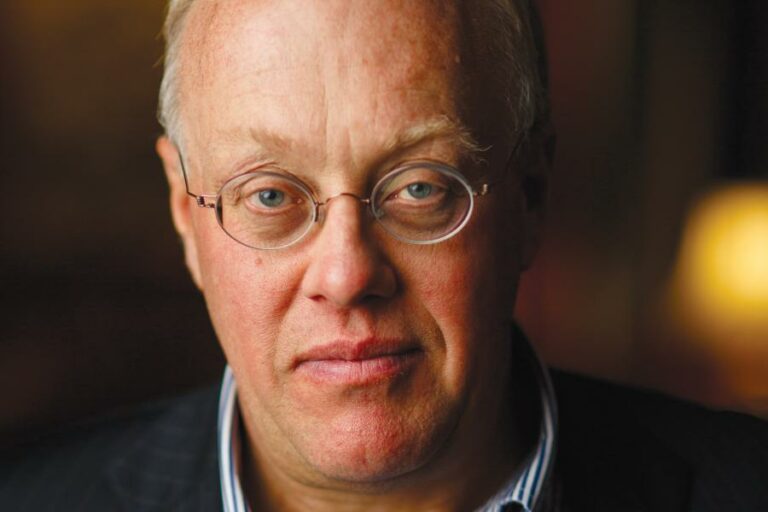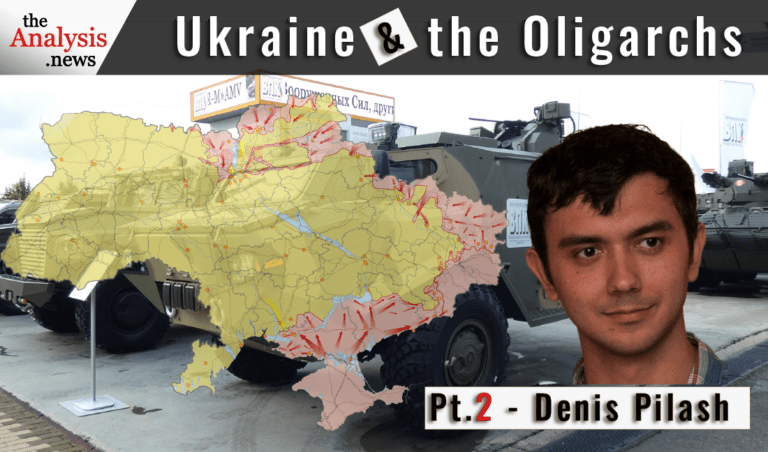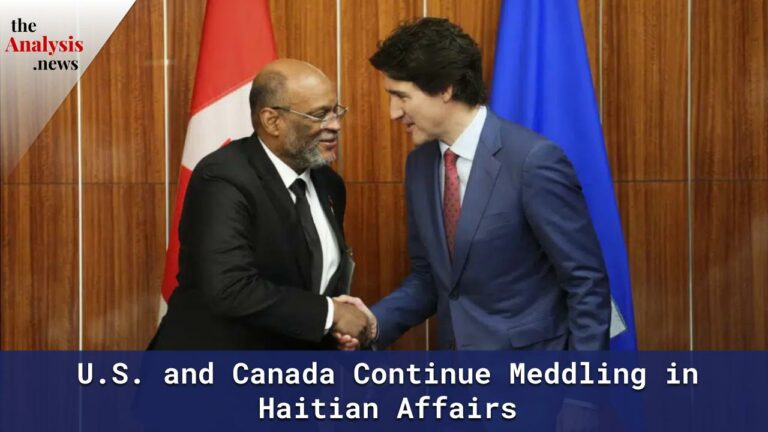In this introduction, journalist Paul Jay reports on several cases where police provocateurs incited violence during otherwise peaceful demonstrations—providing authorities with the pretext they needed to justify mass arrests and repression.
As federal troops crackdown on peaceful protests in Los Angeles, we revisit the Toronto G20—15 years ago—when police beat peaceful demonstrators, arrested over 1,100 people, and suspended civil liberties under the pretext of security.
Journalist Paul Jay connects what happened in 2010 to what’s happening now: the criminalization of dissent, from the mass raids on pro-Palestinian activists in Toronto to the militarized repression unfolding in U.S. cities today.
This video includes a newly recorded introduction and the original 2012 report:
“No Accountability Yet for Toronto G20 Police Crimes.”
What happened in Toronto wasn’t an exception—it was a warning.
Paul Jay
Dress Rehearsal for a Police State: Fifteen Years Ago at the Toronto G20, and Today. Hi, I’m Paul Jay, and welcome to theAnalysis.news.
As we witnessed the violence suppression of protests in Los Angeles, it’s important to learn the lessons of what happened in Toronto 15 years ago during the Toronto G20 Summit—when state power was used to crush peaceful dissent under the guise of security.
In June 2010, Toronto hosted the G20 Summit and became the site of the largest mass arrest in Canadian history. Over 1,100 people were detained, many of them beaten brutally by police. Peaceful protesters, journalists, legal observers, and bystanders were assaulted with batons, thrown to the ground and arrested without cause or legal process. Entire crowds were kettled and held for hours without food, water, or access to lawyers. The police acted with impunity, operating under sweeping powers granted by an obscure regulation called Ontario’s Public Works Protection Act (PWPA)—a wartime law, quietly invoked to give them near martial authority over the downtown core.
Two years later, I reviewed the official investigations and asked: how is this allowed to happen, and why was no one held accountable? Despite multiple scathing reports—from the Ontario Ombudsman to the Toronto Police Services Board and other review bodies—no senior officials or commanders faced real consequences, aside from limited internal discipline and a $16.5 million class action settlement.
But the oversight agencies did show some courage. They did name names, and they did expose failures at the highest levels of command. Of course, it wasn’t really a failure what they did, they intended to do. We need the same courage now from institutions, journalists, and elected officials willing to confront the misuse of state power and defend the right to dissent.
We’ve seen echoes of this in the United States, particularly in the violence suppression of Black Lives Matter protests and solidarity with Palestine. But what’s happening now in Los Angeles marks a new and dangerous escalation.
In June 2025, the federal government deployed 4,000 National Guard troops and 700 Marines into the city over the objections of both the governor and the mayor, targeting peaceful protests against mass deportations. Yes, there was some violence, but it was small, it was isolated, and did not in any way reflect the majority of the protest, which was, by all reports, peaceful. This is not just another protest crackdown. It’s a direct assertion of federal authority in defiance of local democratic institutions.
I was in Baltimore and reported on the Freddie Gray protests in 2015. It was later revealed by the police union that the Baltimore police chief instructed officers on duty during the first night of protests to hang back, to allow looting and fires to occur before intervening, so the demonstrations could be portrayed as violent and out of control. The same tactic was used in Toronto during the 2010 G20 Summit. It was later exposed in court cases that undercover police officers had infiltrated the Black Bloc and were encouraging violence. It was also widely reported in mainstream media that police were ordered to hang back and allow some of the violence to unfold, only stepping in later, once public support had turned against the protesters, and the images of burning police cars could become the symbol of what took place, not a mass peaceful protest.
I don’t know if that’s what’s happening in Los Angeles right now, but this pattern of provocation has been used before to delegitimize protest and give the state, or in this case, Trump, the excuse it wants.
In 2025, the Toronto City Council passed a controversial “bubble zone” bylaw that echoes the same logic used to justify the sweeping police powers during the G20. Ostensibly aimed at protecting access to schools, daycares, and places of worship, the bylaw grants institutions the ability to request a 50-metre enforcement zone, whereas CP24 News reported, even an “act of discouragement” or “objection” can be penalized. While framed as a safety measure, the language is so vague— and the enforcement so discretionary— that it risks criminalizing peaceful protest and political dissent.
We’ve already seen this dynamic unfold in the growing suppression of pro-Palestinian demonstrations across Canada and the United States, where expressions of solidarity are increasingly met with arrests, surveillance, and accusations of hate. The spirit of the G20 crackdown— treating dissent as a threat— is alive and well, just dressed in new legal clothing.
In November 2023, Toronto police carried out pre-dawn raids on the homes of pro-Palestinian activists, known as the Indigo 11, following nonviolent protests against Indigo Books. The protest was aimed at the company’s ties to the HESEG Foundation, a “charity” co-founded by Indigo CEO Heather Reisman, which provides scholarships to lone soldiers— many of them Canadian— to serve in the Israeli military. As reported by the Breach, Reisman personally called the Toronto Police Chief the Night of the protest, and again, just before the raids occurred, police entered homes without warnings, seized personal devices, and detained individuals without timely access to legal counsel. While police defended the operations, mainstream outlets, like Global News, later confirmed that all charges were dropped.
On March 30, 2024, during a Land Day protest, Toronto police used mounted officers to charge through peaceful crowds, knocking people to the ground and causing injuries. People’s Dispatch described the incident as “premeditated, pre-planned police brutality.”
On September 11, 2024, at a protest outside the 51 Division, Police again responded with violence— pepper-spraying demonstrators, shoving people into traffic, and punching several in the face, including women. As the Grind reported, “the police literally caused a riot.” These are not isolated examples, but part of a broader pattern of aggressive policing used to suppress political dissent.
The Toronto G20 should be remembered as a clear warning of how fragile civil liberties can be— even in countries that portray themselves as liberal democracies. What happened in Canada could happen again— there or elsewhere— under the right political conditions, conditions that seem to be brewing.
We need to elect representatives who are committed to enforcing real accountability— including laying criminal charges under the criminal code against police officers, soldiers, and commanders who order or carry out violations of people’s rights. But it’s not just about the leadership. We also need rank and file police, National Guard, and military personnel to refuse unlawful orders and refuse to violate people’s constitutional rights, or in Canada, charter rights.
After the Toronto G20, almost the entire Canadian society, including major media outlets and formal review agencies, denounced the police attacks on peaceful protesters. We need the same broad public repudiation again, both in Canada and the United States. People who protest against injustice need to grow their numbers, organize in their communities to build support and resist these repressive state tactics.
If you’re a member of a union, fight to mobilize the membership against these attacks and repression of protesters, and educate your members that if these tactics go unchallenged, it will be them on picket lines next who become the targets. Without public pressure, we risk normalizing a system where state violence is not just tolerated but carried out with impunity.
Here’s my report, originally published by The Real News Network in 2012, titled No Accountability Yet for the Toronto G20 Police Crimes.
Welcome to The Real News Network. I’m Paul Jay.
It’s been two years since the Toronto G-20, two years since more than 1,000 people were arrested, hundreds of them brutally clubbed and violently assaulted by police. There’s been a series of reports looking into the police activities. First the Ontario Ombudsman issued a report. Then there was a civilian report looking into the activities of the RCMP, then the Ontario Independent Police Review Director, and now the Independent Civilian Review into matters relating to the G-20 summit ”that’s the report issued by the civilian oversight board responsible for the Toronto Police.
Now that all the reviews and reports are in, the question remains: have people responsible been held accountable? And can it all happen again?
But before we dig into all of that, let’s remind ourselves what the G-20 was all about. Let’s take one more look at the big picture.
The 2010 G-20 in Toronto was a declaration by the global governing elite that the economic crisis, largely triggered by banks and financial institutions, would be paid for by ordinary people everywhere. It was also a declaration that force and the violation of basic civil rights would be used against those who protest and resist bearing the consequences of a crisis they didn’t cause. The more than 1,000 arrests at the Toronto G-20 was a statement by the governments of Canada, Ontario, and Toronto that mass protest would be met by mass arrests.
As I pointed out in a previous report, the missing words in the G-20 declaration were higher taxes on the wealthy and higher wages for workers both obvious solutions to the stated goal of fighting deficits and dealing with a serious lack of demand in the economy.
What the G-20 leaders did agree to was this: “[The] advanced economies have committed to fiscal plans that will at least halve deficits by 2013 and stabilize or reduce government debt-to-GDP ratios by 2016” we know that means cuts to pensions/social services and other austerity measures. We see this plan being played out across Europe and North America and other countries. The arrests at the G-20 were made in defense of this global strategy.
And now reports from the Ontario Independent Police Review Director and the Ontario Ombudsman have made it clear: the police services responsible during the G-20 violated citizens’ right to free assembly and used excessive force in doing so.
Remember what André Marin, Ombudsman of Ontario, said:
André Marin
And for the citizens of Toronto, the days up to and including the weekend of the G-20 will live in infamy as a time period where martial law sat in the city of Toronto, leading to the most massive compromise of civil liberties in Canadian history. And we can never let that happen again.
Paul Jay
Gerry McNeilly, the Ontario Independent Police Review director, wrote in his report, “… many police officers ignored basic rights citizens have under the Charter and overstepped their authority when they stopped and searched them arbitrarily and without reasonable grounds in law. . . . Numerous police officers used excessive force when arresting individuals. . . .”
Does there not have to be accountability by the police and politicians who issued the orders and swung the batons? And can it happen again? I’d say yes, unless the following principles are acted upon.
– Violating the right to mass protest is a crime. False arrest is a crime. Those who made decisions that led to mass arrests of peaceful protestors should be charged.
– The term excessive use of force underplays the issue. Assault and battery is a crime. It’s not simply a matter for an internal disciplinary process.
The fact that such actions were criminal is not something I’m making up. In fact, a statement that such actions would be criminal was in the training material shown to police officers before the G-20. I quote, “The training made clear that officers may be held criminally responsible for any use of force in excess of what is required in the circumstances,” end quote.
Well, the Ontario Independent Police Review Director and the Ontario Ombudsman both made clear statements there was excessive use of force by numerous police officers at the G-20. So, if that’s true, where are the criminal charges?
– Police video should be made fully available. Officers who committed assaults should be identified and charged under the criminal code. Earlier this year, Gerry McNeilly recommended charges against five police officers for the beating of G-20 protester Adam Nobody at the legislature. The same principle must be applied to every officer that committed assault.
– Why did police feel they could use such force with impunity, even though they knew every blow was being captured on video? Whoever gave such license to the officers should be charged under the criminal code.
Quoting from the civilian review of the Toronto Police, he says that many Toronto policemen, in violation of Toronto Police policy, took off their badges so they could not be identified. And what happened to those officers that one must assume took off their badges ’cause they thought they were going to do something wrong or illegal and something they might be held accountable for? What happened to them? Well, here’s what the report says:
“In terms of penalties imposed, 66 breaches of the rule requiring identifiers to be worn by Toronto Police Service officers were substantiated and led to the loss of an eight hour day of pay. Separately, 53 breaches were substantiated that lead [sic] to a penalty of two eight hour days of pay. The intentional non-wearing of a name badge by an officer carrying out his or her duties is an extremely serious offence. It is a fundamental breach of duty for police officers to remove their name badges so that they may exercise their powers with intentional anonymity.”
So, for something so serious, eight hours of pay. In some cases, two days of pay. And many more badges were taken off, as can clearly be seen in the many YouTube videos, than the numbers mentioned in the report.
The issue of training goes to the heart of the policing problem at the Toronto G-20. Police were educated to see protesters as the enemy, as dangerous anarchists, everyone ready to rip the city to shreds. This type of training had to be decided upon at a senior level. And it’s hard to imagine the RCMP, which was the operational commander of the Integrated Security Unit, didn’t have at least some role to play in the training that took place. But it’s still not clear who’s responsible. We only get a hint of all of this in the report from the civilian review. I quote:
“[M]any of the images and much of the language used in the training materials to depict protestors was unbalanced. Representations of rioting crowds, violent protestors, and anarchists left the impression that all protestors at the G20 Summit would engage in destructive protest activity and that police officers would be required to respond with aggressive crowd control measures,” end quote.
The police were being prepared for war.
– Both Ontario inquiries said they were not able to investigate the role of the RCMP and the Federal Government. A report by the Commission for Public Complaints Against the RCMP, a civilian watchdog that supposedly spent a year probing the force’s actions during the summit, absolves the RCMP of all responsibility, saying the policing was managed by the Toronto Police and the OPP.
But Toronto Police Chief Blair told CBC, in an interview with Carol Off, that the operational commanders answered to the Unified Command Centre in Barrie, and that was paid for by the federal government and commanded by the RCMP. Chief Blair was not even included in the command structure.
Carol Off
Chief Blair, you were the public face of this security event, whether you liked it or not. How much input actually did you have over the planning leading up to this police operation?
Bill Blair
Quite frankly, I was not involved in much of the planning. I was aware of some of the things that were being planned, I was being briefed, but I was not the operational commander, I was not on the unified command team or on the steering committee. […] The Integrated Security Unit and the command structure that was put in place, I was assured that it was an appropriate command structure. There was 29 different police services, and, you know, it was primarily ”the bills were being paid by the federal government. And so I was led to believe that that was the most appropriate command structure for that event. […] Operational commanders from the Toronto Police Service, answering” you know, they were responsible for operational decisions and answering through the Unified Command Centre located up in Barrie.
Paul Jay
The authoritative role of the RCMP in the policing operations at the Toronto G-20 was alluded to in the Toronto civilian review. Here’s what the report said” and when it mentions “Board,” it’s referring to the civilian oversight board: “The Board was also not aware to what extent the Toronto Police Service was subject to the planning direction of the RCMP, including the ability of the RCMP to override planning decisions made by the Toronto Police Service.”
Somebody is lying, and it stretches all credulity that the RCMP that was officially in charge of the Integrated Security Unit was not, on the day, in the chain of command that led to such abuses of people’s basic rights. This was a federal show. And it’s also beyond reason that the political masters of the RCMP were not involved in making decisions that led to the debacle.
Until we know the full scope of the role of the federal government and the RCMP, there will be no real accountability, and at this point, only an independent investigation with the powers of subpoena could carry this out.
– The public has a right to know which means journalists have a right to report on the scene of police actions without being threatened with arrest. In some ways, this is the most dangerous precedent that was set at the Toronto G-20. Journalists were sent to jail for reporting on police actions. At the G-20, many journalists that were not obstructing police actions were threatened with arrest for simply being on the scene.
This was not a question of misunderstanding credentials as one of the reports suggested. Fully G-20 credentialed journalists, like well-known TVO host Steve Paikin and Real News’s Jesse Freeston, were targeted. This should be moot anyways, because there’s no need for G-20 credentials when reporting on the streets of Toronto. If legitimate press credentials are displayed, that should be it.
In any case, this isn’t about credential confusion. There was a clear authorization for police to arrest journalists that would not leave the scene. When police can operate in secret, beyond public view, this is the basis of a police state.
– The excuse for mass arrests was the vandalism against windows and police cars. But there’s strong evidence that the black bloc tactics could have been contained or prevented. The group had been infiltrated, and actions they undertook were predictable. There’s evidence that the police were told to hold back while police cars burned and windows were broken, creating the rationale for arresting more than 1,000 people who were not involved in any of the violence.
As much as I oppose trashing of windows and other such infantile behavior, these people are not terrorists, and such actions are far less serious than the state effectively eliminating the right to free assembly, the right not to be searched and detained without probable cause and to be subjected to systematic criminal assault by the police. It’s not correct to equate the violence on the part of a small part of the protesters and that mostly against property with the violence of hundreds of police officers and all against persons.
– There’s been a lot of attention paid to the Public Works Protection Act, and rightly so. But the use of the breach of the queen’s peace was as dangerous. It was the law that gave the police the “right” to arrest most of the thousand people. The fact that no real charges could follow when those people were released does not mitigate the fact that they had lost their democratic right to assemble and protest and were forcibly detained. If this is not to happen again, the police must get clear guidelines from the attorney general’s office that this archaic piece of legislation, meant to stop bar fights, has no place in dealing with peaceful demonstrators.
The primary mandate of the police, after ensuring the safety of visiting dignitaries, which police acknowledge was never in doubt, should have been to protect the right to free assembly. The opposite is what took place.
To sum up:
– Forcibly denying democratic rights is a crime. Those responsible should be charged.
– The right of journalists to report on police actions must be enshrined in police policy and guidelines. It’s simple: journalists should stay out of the way, and if they do, they cannot be ordered to leave the scene.
– Assault is a crime. It should be treated as such.
– The Public Works Protection Act and breach of the queen’s peace have no place in a democracy.
We need to know the role of our political leaders at the provincial and the federal levels, including the prime minister, whose show this really was. They’ve avoided all scrutiny (except for ours). And when the basic rights of Canadians are at stake, they cannot be allowed to shove this onto a few police officials, and at that only mildly so.
If the people of Ontario and Canada do not make such demands, if journalists do not insist on their rights, then we are living in an illusion of democracy, where basic rights can be withdrawn at any time and those responsible will receive a slap on the wrist and have no fear of doing it all again.
Podcast: Play in new window | Download | Embed
Subscribe Apple Podcasts | Spotify | Android | iHeartRadio | Blubrry | TuneIn | Deezer | RSS
Never miss another story
Subscribe to theAnalysis.news – Newsletter
